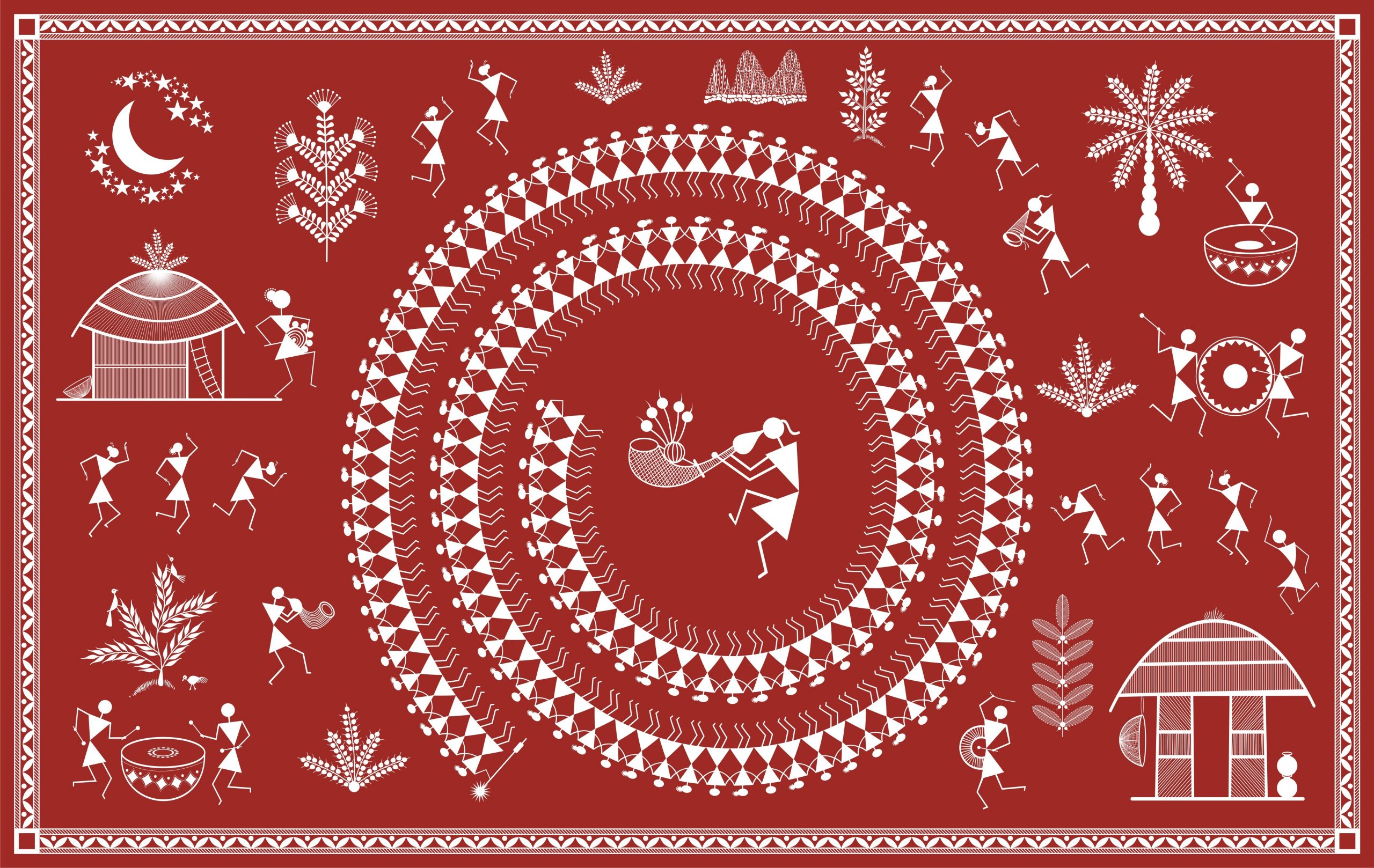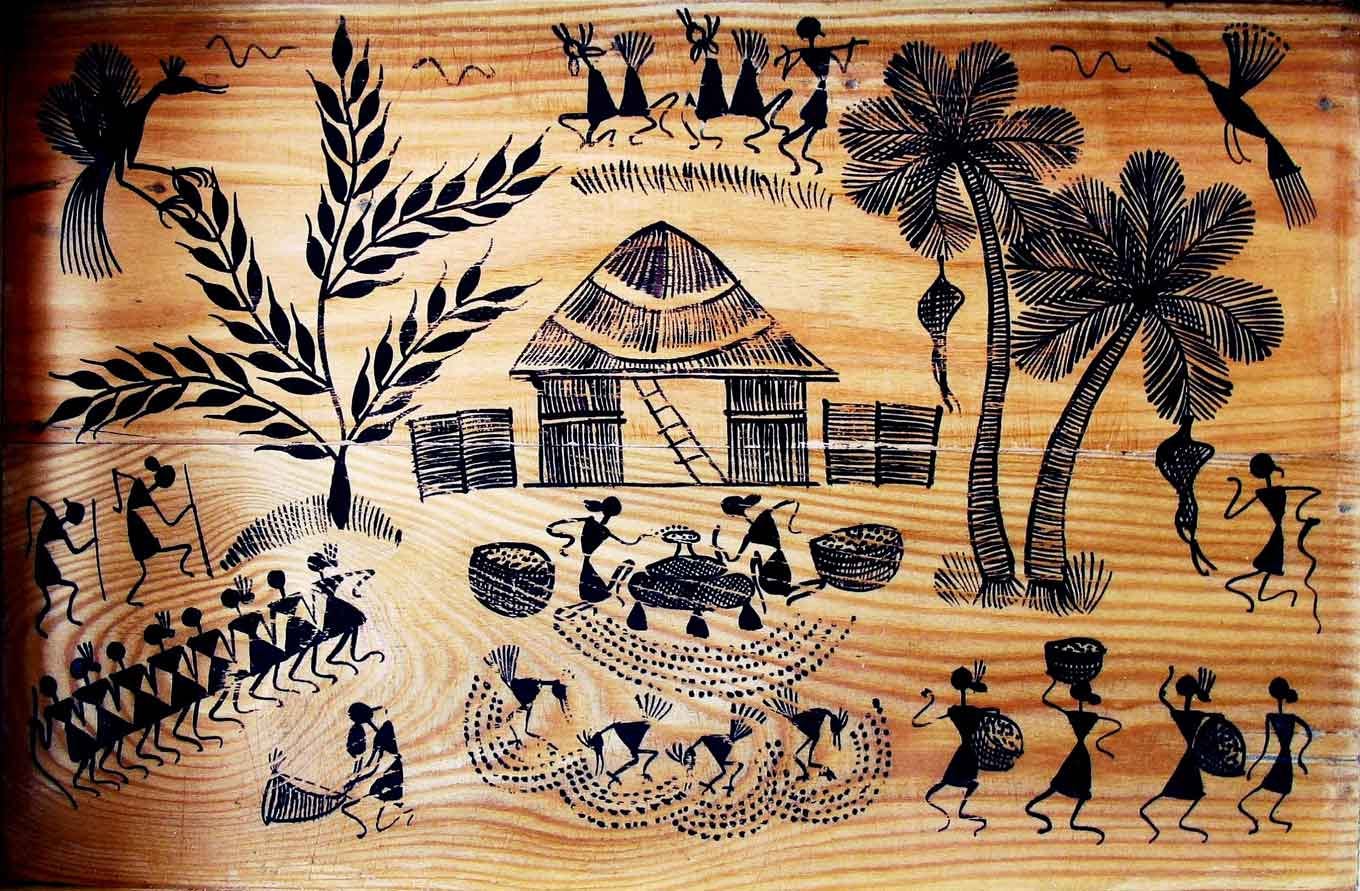In the vibrant tapestry of Indian art, Worli painting stands as a testament to the country’s rich cultural heritage and the enduring legacy of indigenous artistic traditions. This blog post is your gateway to the world of Worli art, an art form that has transcended time, telling stories of India’s rural life and folklore through intricate and vibrant designs.
A Glimpse into Worli Painting
What is meant by Worli art? It’s a question that invites us to delve into the heart of this ancient Indian tradition. Worli art takes its name from the Worli tribe, an indigenous community of fishermen and farmers residing in the coastal villages of Maharashtra, India. This art form has been practiced for centuries and is deeply intertwined with the daily lives and rituals of the Worli community.
The Beauty of Simplicity
One of the defining characteristics of Worli painting is its simplicity. The artists use basic shapes and bold lines to create intricate designs that narrate stories, depict scenes from rural life, and celebrate nature’s bounty. These uncomplicated yet captivating motifs are typically rendered in a limited color palette dominated by earthy tones and vibrant reds.
Themes and Motifs
Worli art predominantly features themes inspired by rural life and folklore. Common motifs include:
- Harvest Scenes: Depicting the joyous moments of farmers harvesting their crops.
- Village Life: Capturing scenes from daily life in rural India, such as women fetching water from wells or children playing.
- Folk Tales: Narrating stories and myths passed down through generations.
- Nature’s Beauty: Celebrating the flora and fauna of the region, with motifs like peacocks, trees, and fish.
The Technique of Worli Painting
Worli painting is traditionally created on an austere canvas, often a mud or cow dung-coated wall. The artists use a mixture of rice paste and water as a base for their artwork. The paintbrushes used are typically fashioned from the hair of domestic animals, ensuring a connection to nature in every stroke.
The detailing in Worli art is remarkable, with intricate patterns and designs painted with precision. These paintings are characterized by their use of symmetry and balance, creating a harmonious visual experience.
Also see: Unraveling the Beauty of Kalamkari: A Timeless Textile Art
Worli Art for Odisha and Beyond
While Worli art has its roots in Maharashtra, it has also found a place in the hearts of art enthusiasts in other regions, including Odisha. The art form has transcended its tribal origins, and Worli art is now recognized and celebrated on a global scale.
Inspiring the Younger Generation
Worli art is not just for seasoned artists; it’s also accessible and enjoyable for kids. Worli art for kids introduces them to the world of creativity, storytelling, and cultural heritage. With its simple yet engaging designs, it’s an excellent choice for young artists looking to express themselves.
Exploring Worli Art
As you explore the world of Worli painting, you’ll come across a plethora of Worli art images and Worli art designs that showcase the diversity and beauty of this traditional Indian art form. Each image and design carries with it a piece of history and a tale of India’s rural life.
In Conclusion
Worli painting is a testament to the timeless allure of indigenous Indian art and artistry. It’s a celebration of simplicity, storytelling, and the deep-rooted connection between art and life. As you delve into the world of Worli art, you’ll find yourself captivated by its vibrant motifs, touched by its stories of rural India, and inspired by the artistic legacy it carries. It’s a journey into the heart of Indian culture, where every stroke of the brush tells a tale, and every design carries the weight of history.

